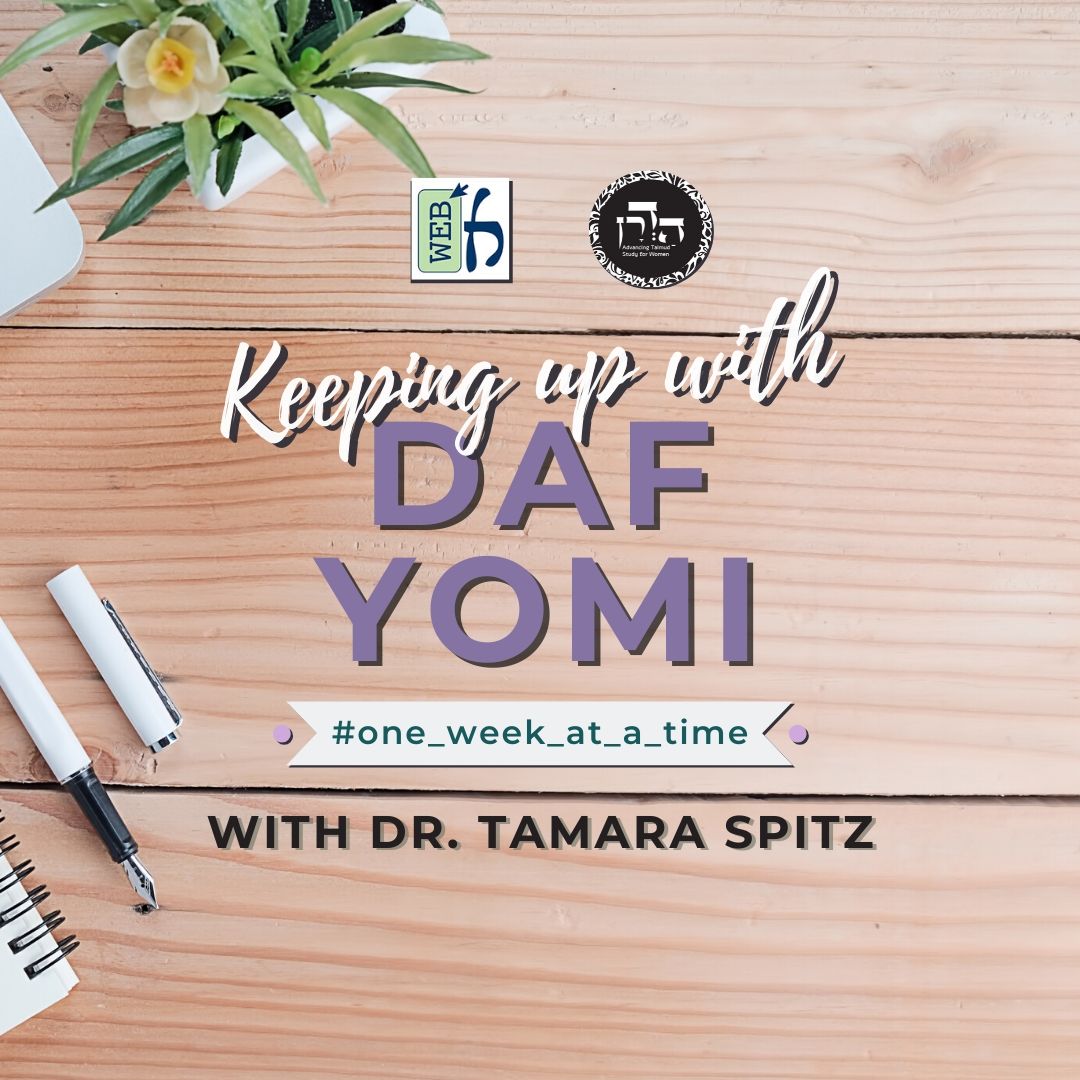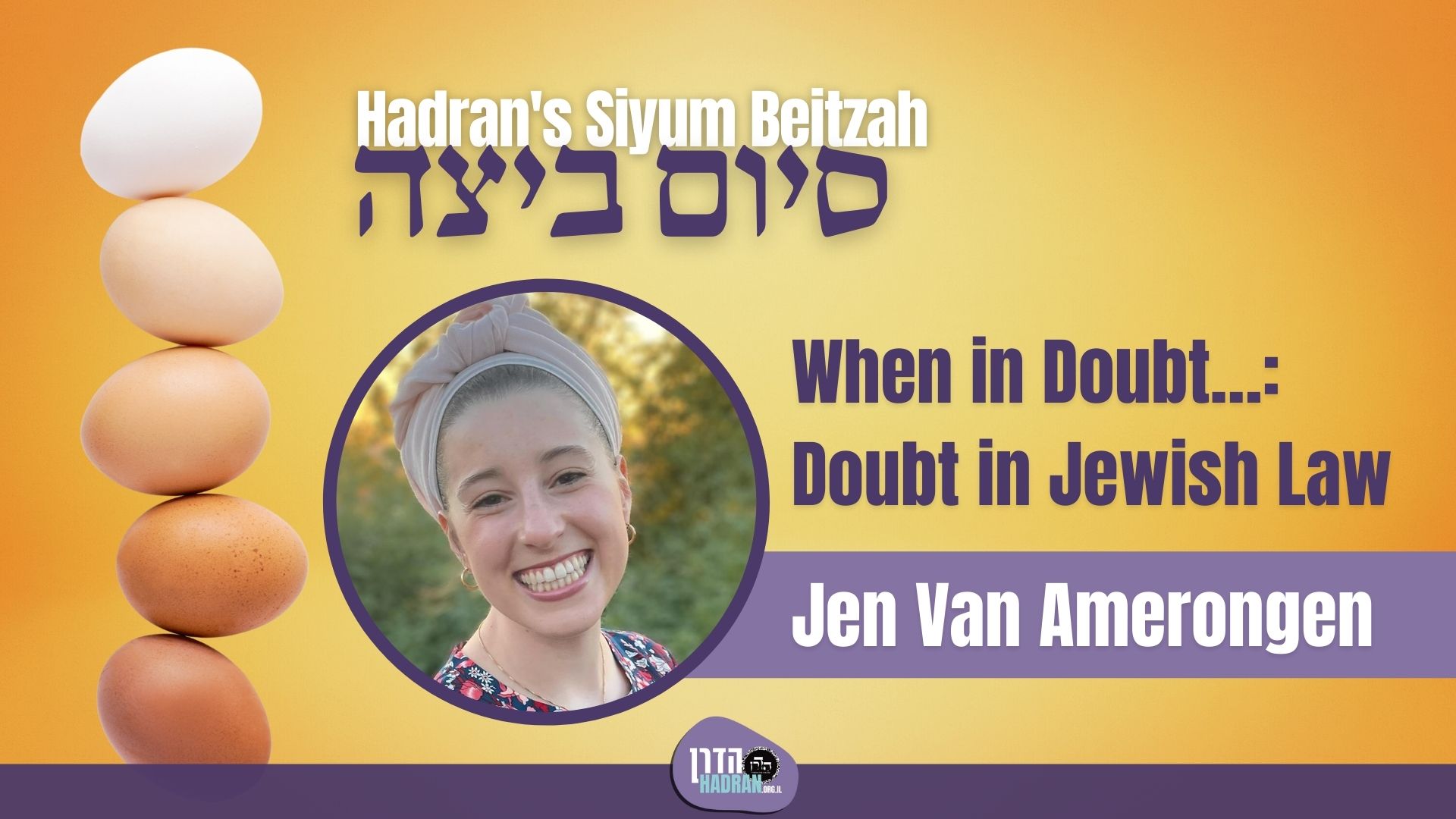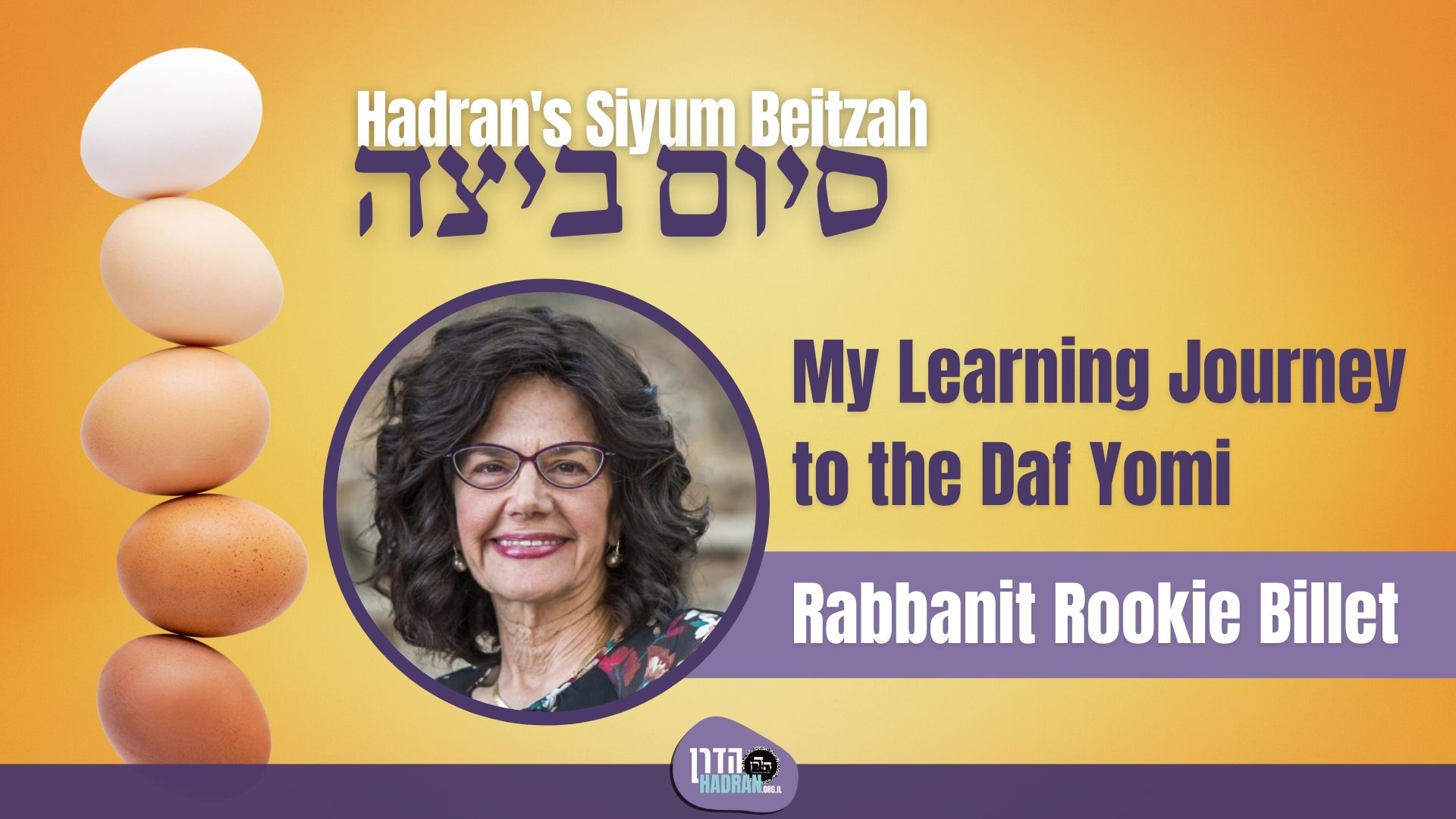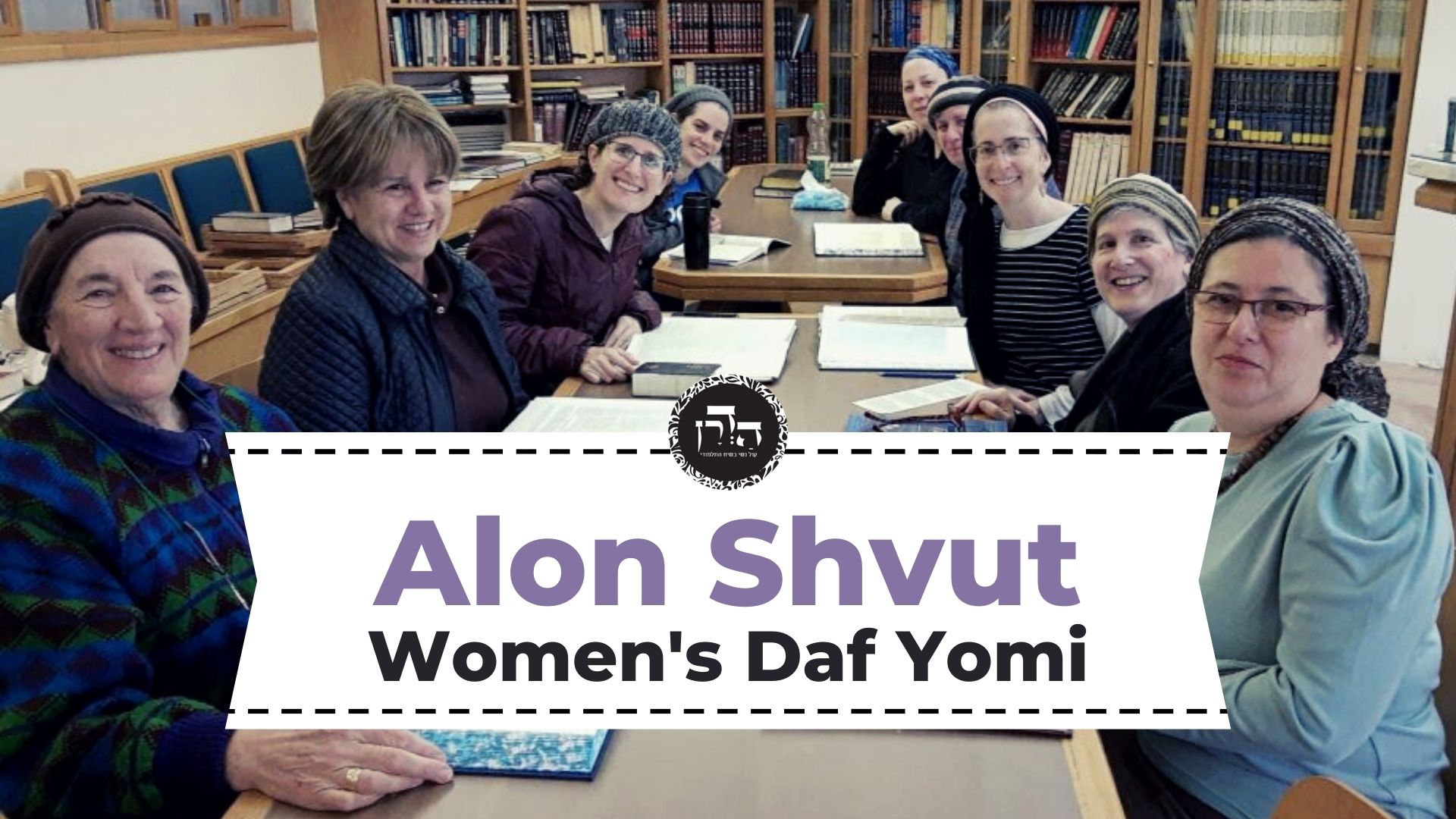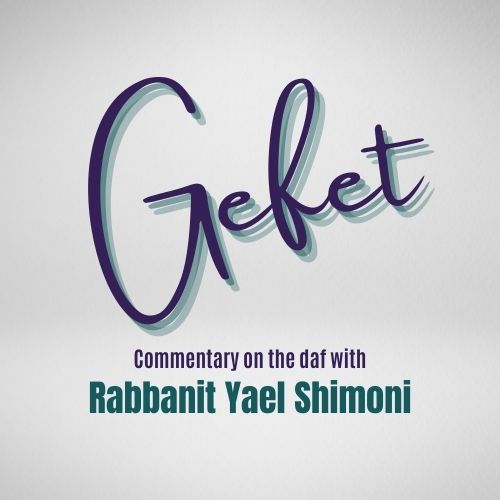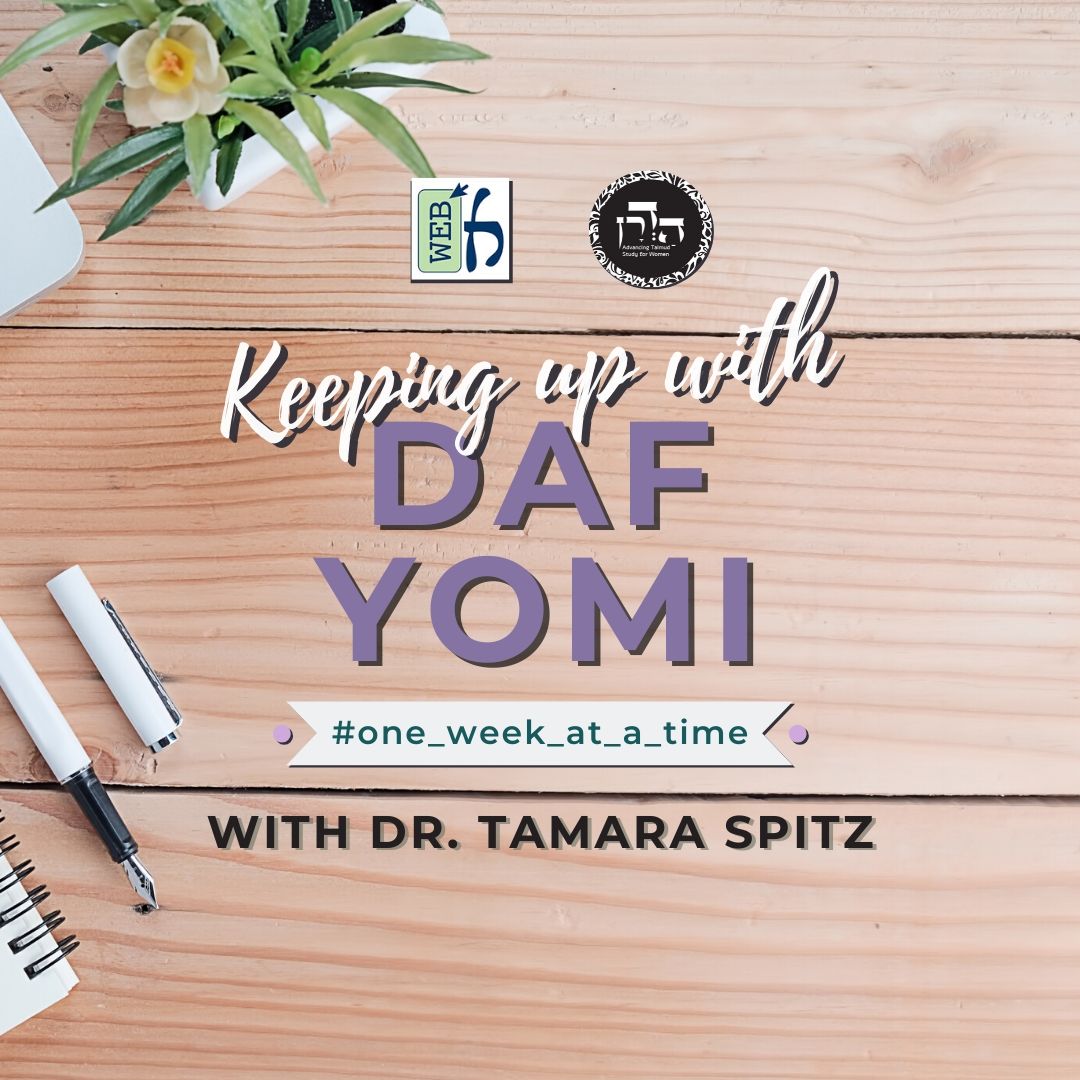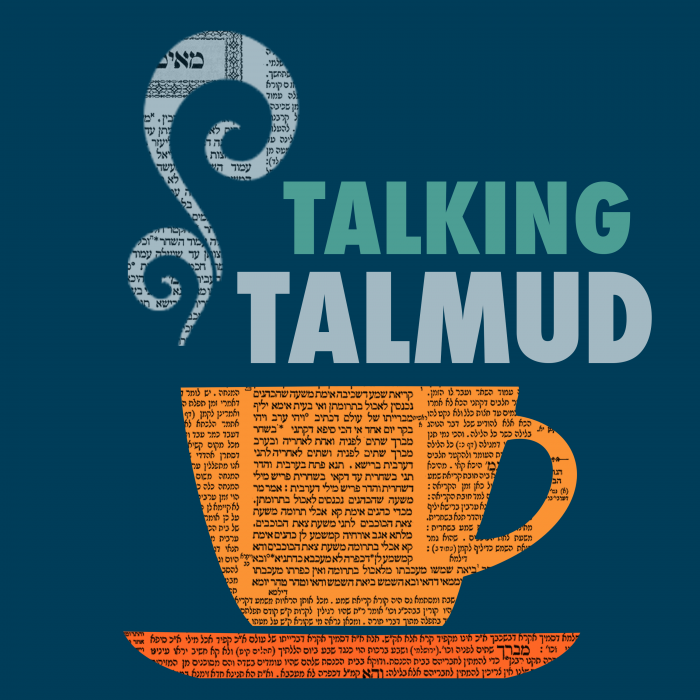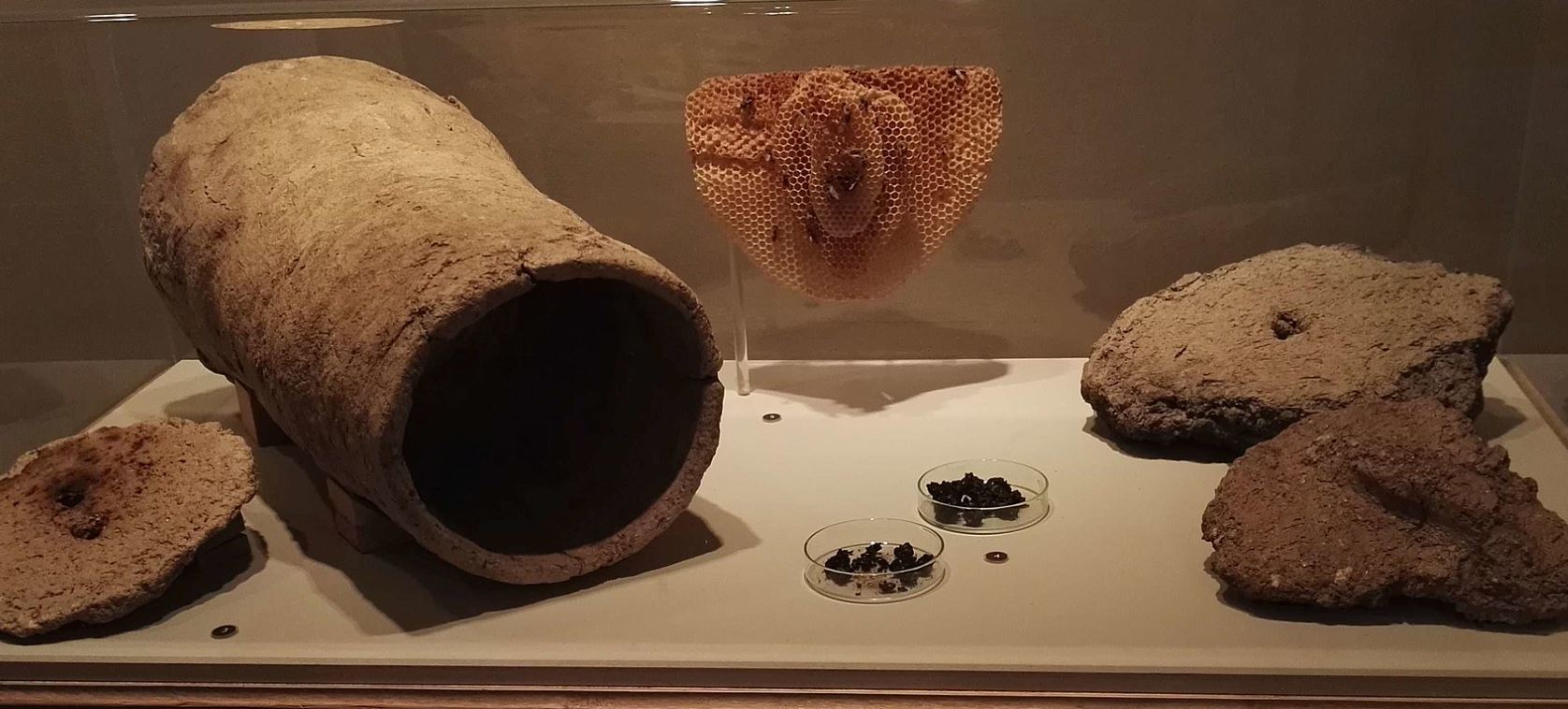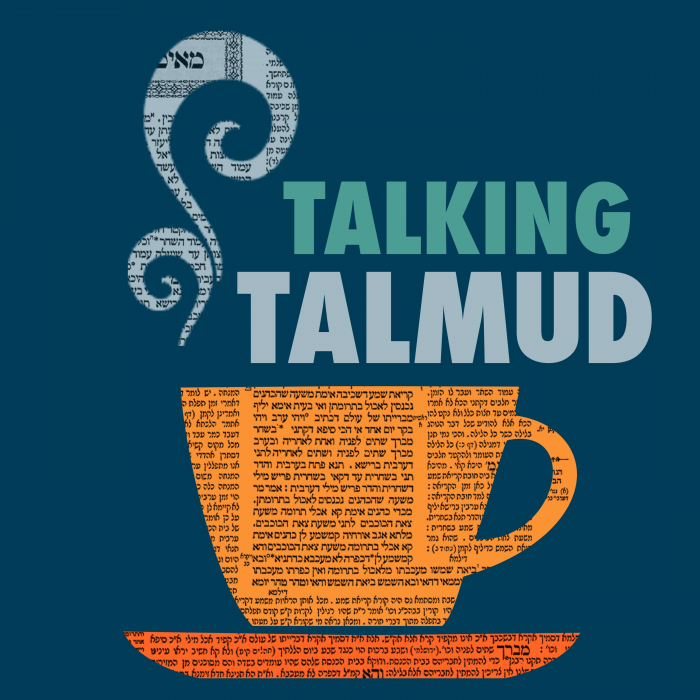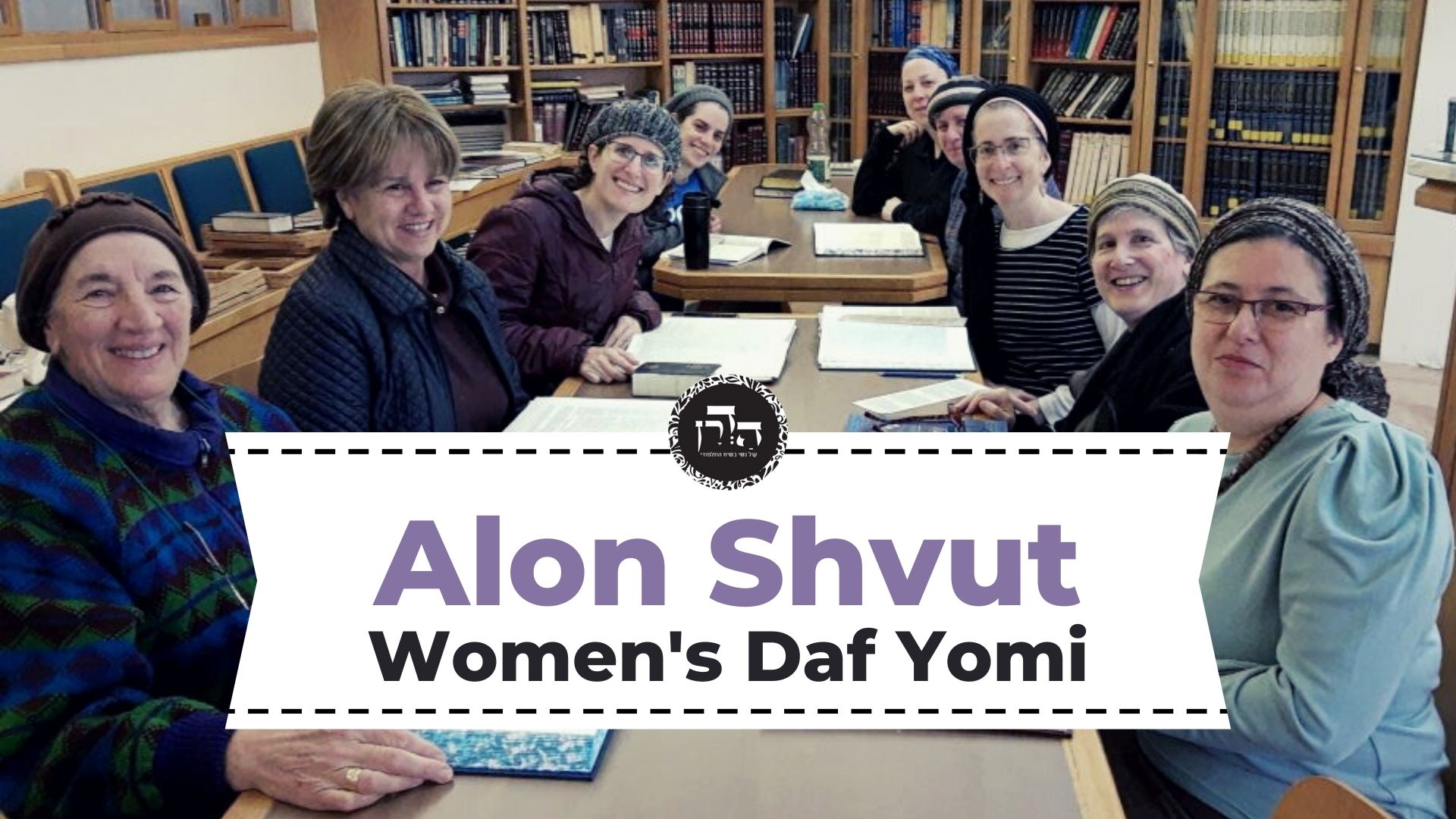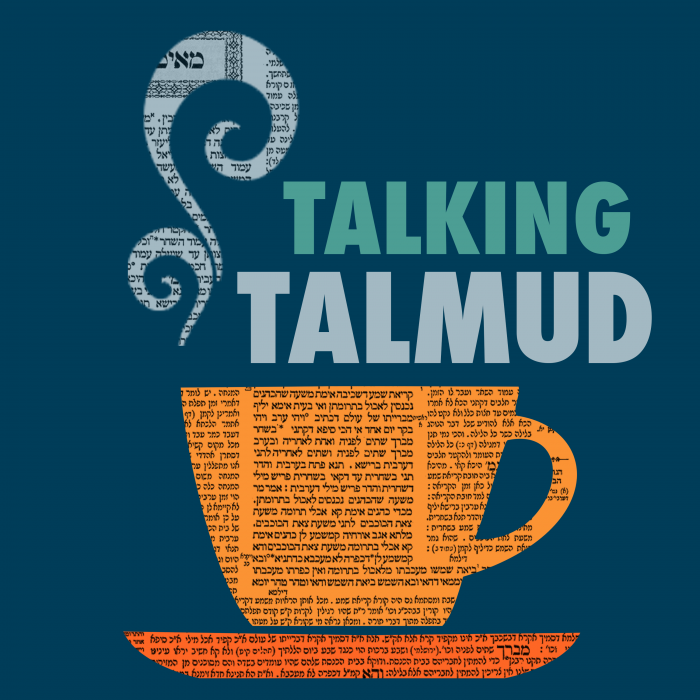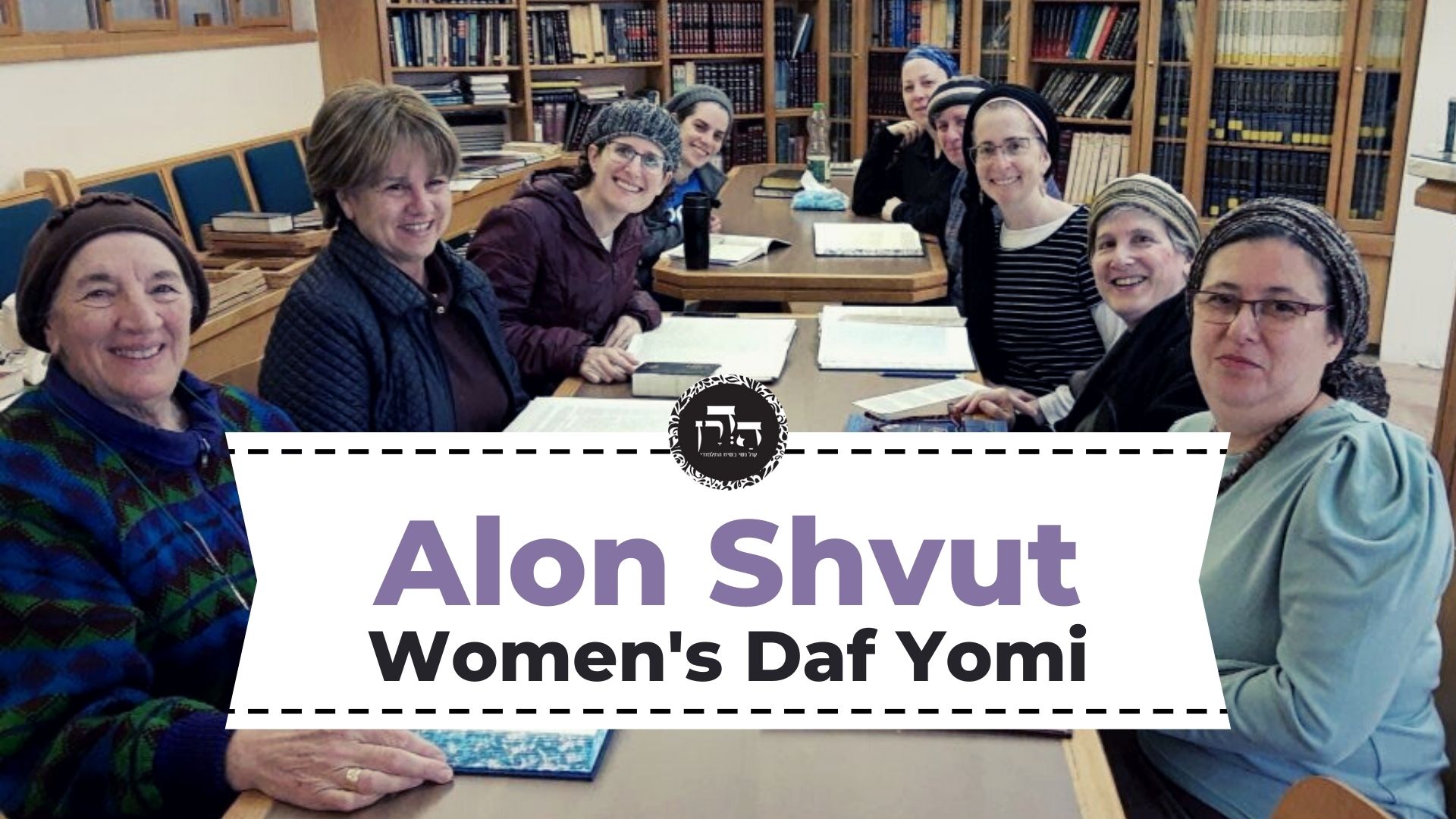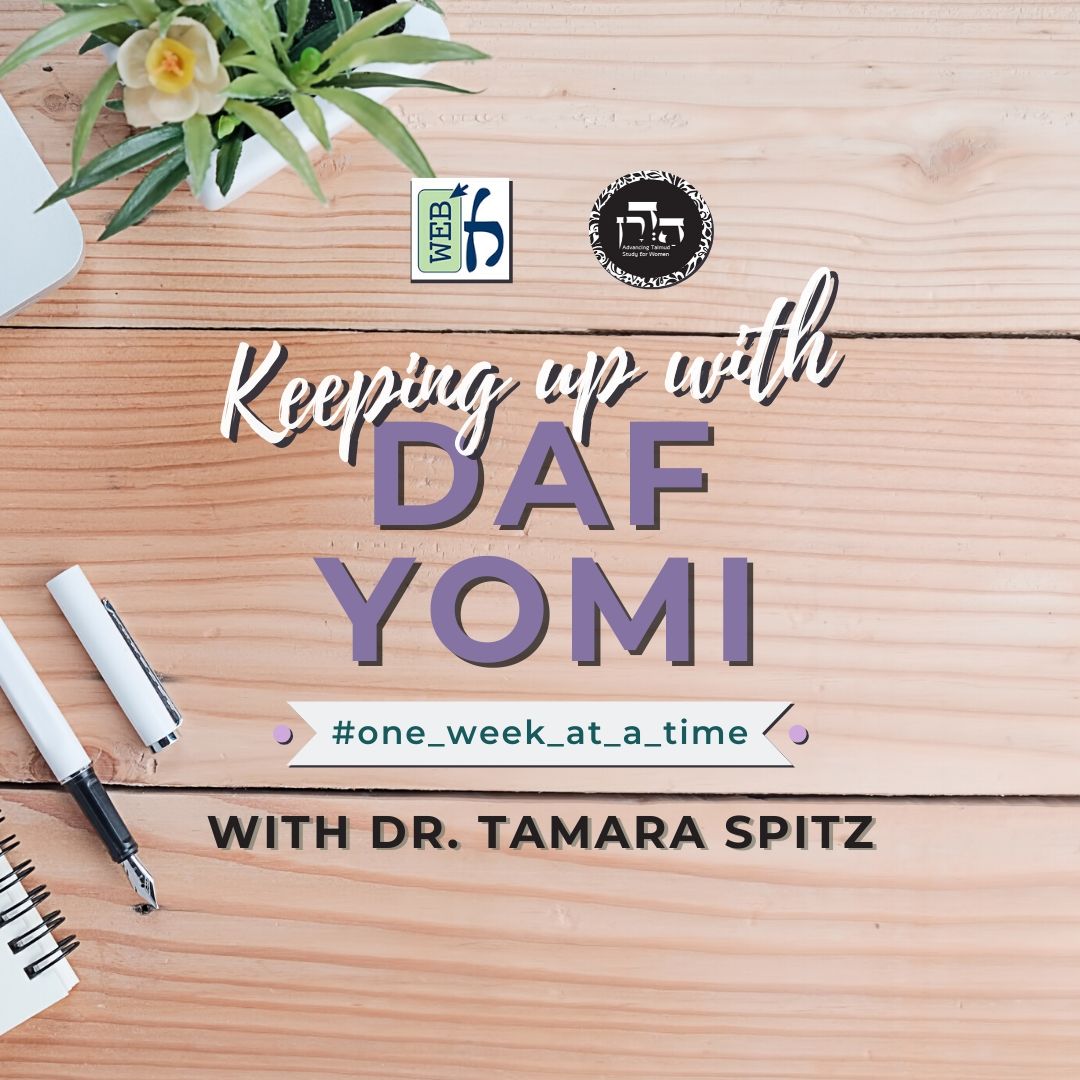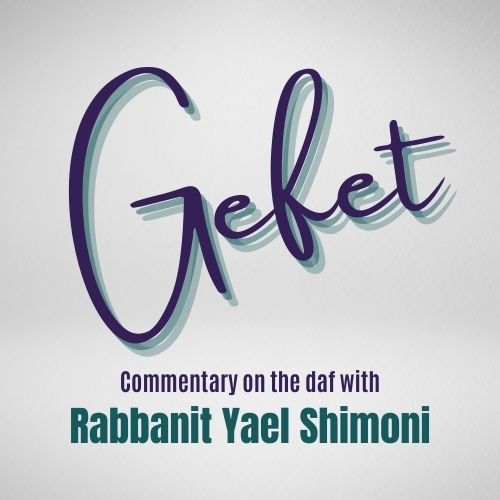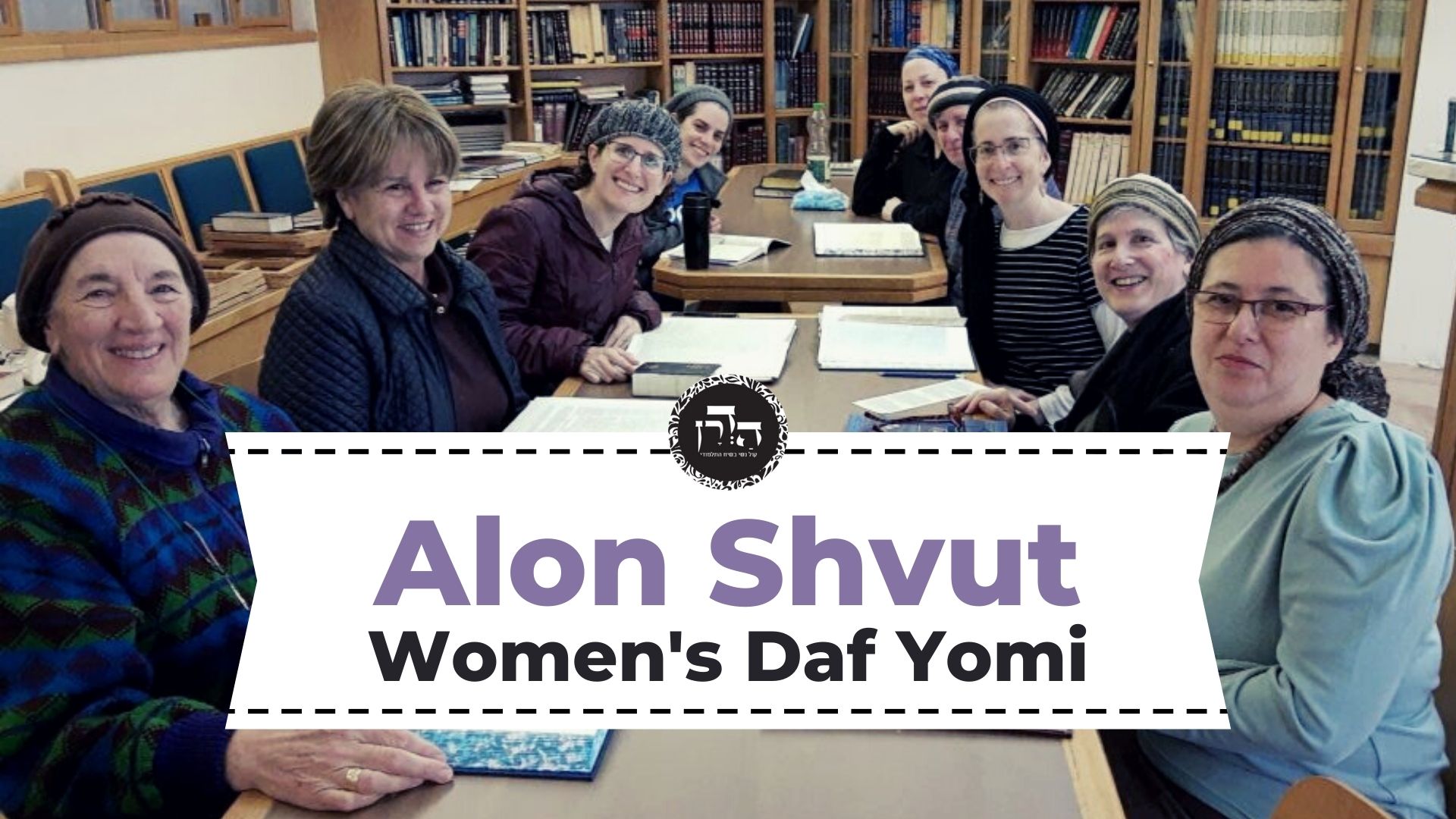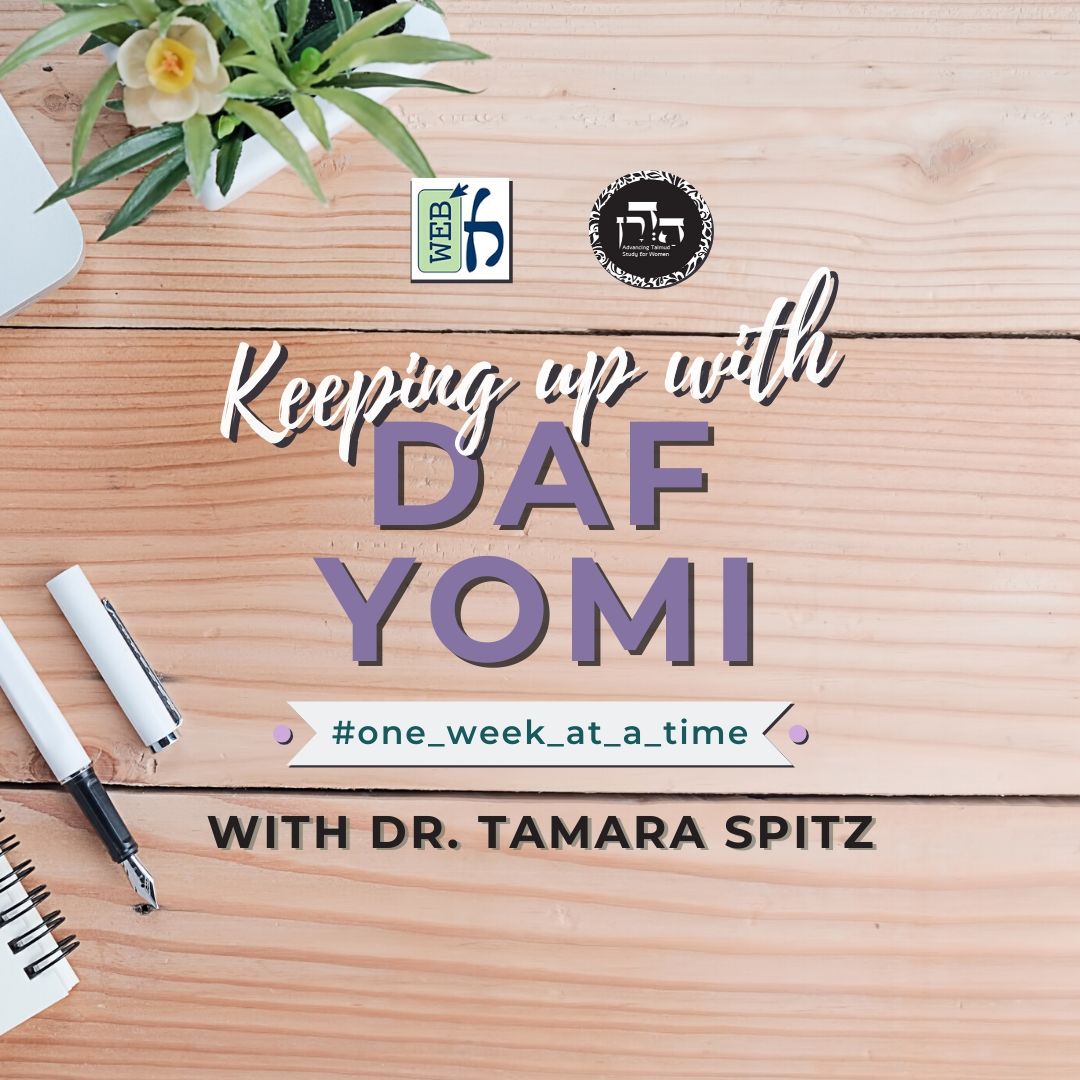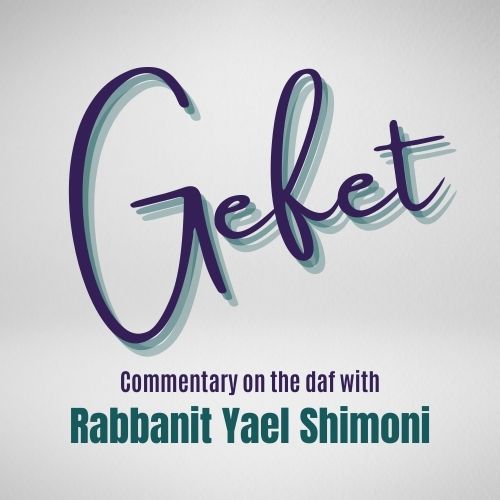Beitzah 37
דְּאִית לֵיהּ אִשָּׁה וּבָנִים.
because it is dealing with a case in which he already has a wife and children, so that he has already fulfilled the mitzva to be fruitful and multiply, and his betrothal of another woman is only an optional act.
לֹא חוֹלְצִין וְלֹא מְיַבְּמִין. וְהָא מִצְוָה קָא עָבֵיד! לָא צְרִיכָא, דְּאִיכָּא גָּדוֹל, וּמִצְוָה בַּגָּדוֹל לְיַבֵּם.
§ Nor perform ḥalitza, nor perform levirate marriage: The Gemara asks: But doesn’t one perform a mitzva through these acts? Why are they categorized as optional? The Gemara answers: No, it is necessary for the mishna to categorize them as optional, as it is speaking of a case when there is an older brother. Since the general principle is that the preferable way to carry out the mitzva is for the oldest brother to perform levirate marriage, the performance of levirate marriage by a younger brother is classified as optional.
וְכֻלְּהוּ טַעְמָא מַאי — גְּזֵרָה שֶׁמָּא יִכְתּוֹב.
The Gemara clarifies the reason for the prohibition against judging, betrothing, etc., on Shabbat and Festivals: And in all these cases, what is the reason they may not be performed? It is a decree lest one write down the proceedings of these acts in a document, such as the verdict of a judgment, the document of betrothal, a document testifying to the ḥalitza, or a marriage contract in the case of levirate marriage.
וְאֵלּוּ הֵן מִשּׁוּם מִצְוָה: לֹא מַקְדִּישִׁין וְלֹא מַעֲרִיכִין וְלֹא מַחֲרִימִין — גְּזֵרָה מִשּׁוּם מִקָּח וּמִמְכָּר.
§ It was taught in the mishna: And the following are notable because of the full-fledged mitzva involved in them, yet are prohibited on Shabbat: One may not consecrate, nor take a valuation vow, nor consecrate objects for use by the priests or the Temple. The Gemara explains: All these cases are prohibited because of a decree due to their similarity to commerce. These acts, which all involve the transfer of ownership to the Temple treasury, resemble commerce, which is prohibited on a Festival.
וְלֹא מַגְבִּיהִין תְּרוּמוֹת וּמַעַשְׂרוֹת. פְּשִׁיטָא! תָּנֵי רַב יוֹסֵף: לֹא נִצְרְכָא אֶלָּא לִיתְּנָהּ לְכֹהֵן בּוֹ בַּיּוֹם.
§ It was taught in the mishna: And one may not separate terumot and tithes. The Gemara asks: Is it not obvious that this is so? In doing so one makes forbidden food usable, a form of repairing, which is a prohibited labor. Rav Yosef taught: It is necessary for the mishna to teach this only to state that it is prohibited even to separate teruma in order to give it to a priest on the same day. One could have thought that since he is separating the produce in order to give it to a priest it should be permitted like any other preparation of food; the mishna therefore states explicitly that it is prohibited.
וְהָנֵי מִילֵּי פֵּירֵי דִּטְבִילִי מֵאֶתְמוֹל, אֲבָל פֵּירֵי דִּטְבִילִי הָאִידָּנָא, כְּגוֹן עִיסָּה לְאַפְרוֹשֵׁי מִינַּהּ חַלָּה — מַפְרְשִׁינַן וְיָהֲבִינַן לְכֹהֵן.
The Gemara comments: And this applies only to produce that had the status of untithed produce, and therefore was required to be tithed, the day before the Festival. However, produce that became untithed now on the Festival itself, such as dough prepared on the Festival, which becomes untithed and requires ḥalla to be taken from it only after the dough is made: With regard to separating ḥalla from it, one may separate the ḥalla and give it to a priest even on a Festival.
וְהָנֵי, מִשּׁוּם רְשׁוּת אִיכָּא, מִשּׁוּם שְׁבוּת לֵיכָּא? וְהָנֵי, מִשּׁוּם מִצְוָה אִיכָּא, מִשּׁוּם שְׁבוּת לֵיכָּא?
The Gemara asks a question. When the mishna describes those cases as notable because they are optional, is this to say that their prohibition is not because of a rabbinic decree to enhance the character of Shabbat as a day of rest [shevut]? Likewise, with regard to those cases described as notable because they are mitzvot, is this to say that their prohibition is not because of shevut? The mishna, by referring only to the first of its three categories as shevut, implies that the acts listed in the following categories do not involve shevut. But this is not so; as the Gemara stated above, all these acts are prohibited by rabbinic decree to enhance the character of Shabbat and the Festival as days of rest.
אָמַר רַבִּי יִצְחָק, לָא מִבַּעְיָא קָאָמַר: לָא מִבַּעְיָא שְׁבוּת גְּרֵידְתָּא דְּאָסוּר, אֶלָּא אֲפִילּוּ שְׁבוּת דִּרְשׁוּת נָמֵי אָסוּר. וְלָא מִבַּעְיָא שְׁבוּת דִּרְשׁוּת דְּאָסוּר, אֶלָּא אֲפִילּוּ שְׁבוּת דְּמִצְוָה נָמֵי אָסוּר.
Rabbi Yitzḥak said: They are indeed all prohibited as shevut. The mishna lists three types of shevut: Those that involve no mitzva whatsoever, those that have a mitzva aspect to them, and those that constitute a full-fledged mitzva. And the tanna is speaking and arranges his list employing the style of: There is no need, i.e., he arranges the cases in order of increasing notability. First, there is no need to state, i.e., it is most obvious, that plain shevut, which involves no mitzva at all, is prohibited, but even shevut of an optional act, i.e., an act that is a minor mitzva, is also prohibited. And there is no need to state, i.e., it is obvious, that shevut of an optional act is prohibited, but even shevut of a full-fledged mitzva is also prohibited.
כׇּל אֵלּוּ בְּיוֹם טוֹב אָמְרוּ, וּרְמִינְהוּ: מַשִּׁילִין דֶּרֶךְ אֲרוּבָּה בְּיוֹם טוֹב, אֲבָל לֹא בְּשַׁבָּת!
§ It was taught in the mishna: The Sages spoke of all these acts being prohibited even with regard to a Festival; all the more so are they prohibited on Shabbat. There is no difference between a Festival and Shabbat except for work involving food. The Gemara raises a contradiction against this from an earlier mishna: One may lower produce from the roof into the house through a skylight to prevent it from being spoiled by the rain on a Festival, but not on Shabbat. This shows that there is another difference between a Festival and Shabbat besides food preparation: Doing a strenuous activity to prevent a loss is permitted on a Festival but prohibited on Shabbat.
אָמַר רַב יוֹסֵף, לָא קַשְׁיָא: הָא רַבִּי אֱלִיעֶזֶר, הָא רַבִּי יְהוֹשֻׁעַ.
Rav Yosef said: This is not difficult, as this mishna here, which does not include the halakha of lowering produce as an example of a difference between Shabbat and a Festival, is in accordance with Rabbi Eliezer, whereas that previous mishna that does cite it as a difference is in accordance with Rabbi Yehoshua.
דְּתַנְיָא: אוֹתוֹ וְאֶת בְּנוֹ שֶׁנָּפְלוּ לְבוֹר — רַבִּי אֱלִיעֶזֶר אוֹמֵר: מַעֲלֶה אֶת הָרִאשׁוֹן עַל מְנָת לְשׁוֹחְטוֹ וְשׁוֹחֲטוֹ, וְהַשֵּׁנִי עוֹשֶׂה לוֹ פַּרְנָסָה בִּמְקוֹמוֹ כְּדֵי שֶׁלֹּא יָמוּת.
Rav Yosef elaborates on his statement: As it is taught in a baraita: If a cow and her calf, which may not be slaughtered on the same day because of the biblical prohibition: “You shall not kill it and its offspring both in one day” (Leviticus 22:28), fell into a pit on a Festival, and their owner wishes to take them out, Rabbi Eliezer says: One may raise the first in order to slaughter it and then slaughter it, and as for the second, he provides it sustenance in its place so that it will not die in the pit. It is prohibited to undertake the strenuous task of raising an animal out of a pit except for the purpose of eating it on the Festival. Therefore, since one cannot slaughter both animals on the Festival, only one can be raised, while the other should be sustained in its place until after the Festival.
רַבִּי יְהוֹשֻׁעַ אוֹמֵר: מַעֲלֶה אֶת הָרִאשׁוֹן עַל מְנָת לְשׁוֹחְטוֹ וְאֵינוֹ שׁוֹחֲטוֹ, וְחוֹזֵר וּמַעֲרִים וּמַעֲלֶה הַשֵּׁנִי. רָצָה — זֶה שׁוֹחֵט, רָצָה — זֶה שׁוֹחֵט.
Rabbi Yehoshua, however, says: One may raise the first with the intent of slaughtering it and then change his mind and not slaughter it. Then he may go back and employ artifice by deciding that he prefers to slaughter the second one, and he raises the second. Having raised both animals, if he so desires he may slaughter this one; if he so desires he may slaughter that one. Rav Yosef understands the argument between the two Sages as follows: Rabbi Yehoshua maintains that it is permitted to perform a strenuous activity on a Festival in order to prevent a loss, and therefore he may raise both animals, lest the one left behind die in the pit. Rabbi Eliezer, on the other hand, holds that one may not perform a strenuous activity to prevent a loss, so the second animal must be left in the pit even though it may die there. It may therefore be posited that the mishna that permits lowering produce on a Festival to prevent loss is in accordance with Rabbi Yehoshua’s opinion. Rabbi Eliezer would disagree with this leniency, and the principle that there is no difference between Shabbat and a Festival other than food preparation would remain intact.
אֲמַר לֵיהּ אַבָּיֵי: מִמַּאי? דִּילְמָא עַד כָּאן לָא קָאָמַר רַבִּי אֱלִיעֶזֶר הָתָם, אֶלָּא דְּאֶפְשָׁר בְּפַרְנָסָה, אֲבָל הָכָא דְּלָא אֶפְשָׁר בְּפַרְנָסָה — לָא!
Abaye said to Rav Yosef: From where do you know that this analysis of these Sages’ opinions is correct? Perhaps Rabbi Eliezer stated his opinion that a strenuous activity to prevent monetary loss is prohibited on a Festival only thus far, there in the case of the animals in the pit, where it is possible to sustain the second animal in the pit and keep it from dying. But here, in the case of the produce on the roof, where there is no possibility of preventing the loss through providing sustenance, he would not prohibit lowering the produce to save it from loss.
אִי נָמֵי: עַד כָּאן לָא קָאָמַר רַבִּי יְהוֹשֻׁעַ הָתָם, אֶלָּא דְּאֶפְשָׁר לְאַעֲרוֹמֵי. אֲבָל הָכָא דְּלָא אֶפְשָׁר לְאַעֲרוֹמֵי — לָא.
Alternatively, one can propose an opposite argument: Rabbi Yehoshua stated his opinion that a strenuous activity to prevent loss is permitted only thus far, there in the case of the two animals, because it is possible to employ artifice to raise the second animal, so that an observer might assume that that he was not acting to preserve his property, but wished to eat the first animal and subsequently changed his mind. But here, in the case of the produce on the roof, where it is not possible to employ artifice, as it is clear that he is acting to salvage his produce, Rabbi Yehoshua would not be lenient. Therefore, Rav Yosef’s approach to resolving the contradiction has no support from this baraita.
אֶלָּא אָמַר רַב פָּפָּא, לָא קַשְׁיָא: הָא בֵּית שַׁמַּאי, הָא בֵּית הִלֵּל.
Rather, Rav Pappa said: This resolution of the contradiction is to be rejected in favor of the following: This is not difficult, as this case is in accordance with Beit Shammai, whereas that case follows the approach of Beit Hillel.
דִּתְנַן, בֵּית שַׁמַּאי אוֹמְרִים: אֵין מוֹצִיאִין לֹא אֶת הַקָּטָן וְלֹא אֶת הַלּוּלָב וְלֹא אֶת סֵפֶר תּוֹרָה לִרְשׁוּת הָרַבִּים, וּבֵית הִלֵּל מַתִּירִין.
As we learned in a mishna: Beit Shammai say: On a Festival one may not take out a child who cannot walk, nor a lulav, nor a Torah scroll into the public domain, as none of these are required for the preparation of food, and Beit Hillel permit it. It is certainly prohibited to carry out any item into the public domain on Shabbat, yet Beit Hillel permit it on a Festival. Therefore, it may be posited that just as Beit Hillel allow carrying out items on a Festival but not on Shabbat, so would they permit moving the produce off the roof on a Festival but not on Shabbat. According to Beit Shammai, who forbid carrying items out on a Festival and on Shabbat equally, moving the produce from the roof would also be equally prohibited, and the principle that there is no difference between Shabbat and a Festival other than food preparation would remain intact.
דִּלְמָא לָא הִיא, עַד כָּאן לָא קָא אָמְרִי בֵּית שַׁמַּאי הָתָם, אֶלָּא אַהוֹצָאָה, אֲבָל אַטִּלְטוּל — לָא. אַטּוּ טִלְטוּל לָאו צוֹרֶךְ הוֹצָאָה הוּא?
The Gemara at first refutes this explanation: Perhaps that is not so, as it is possible that Beit Shammai stated their opinion only thus far, there with regard to the prohibition against transferring objects from one domain to another, but not with regard to moving objects, such as produce, from place to place in the house. The Gemara rejects this claim: Is that to say that moving is not performed for the sake of taking out to the public domain? The decree against moving items unnecessarily, i.e., not for use on Shabbat or a Festival, was enacted due to a concern that one might take objects into the public domain. Rav Pappa’s explanation that it is only Beit Shammai who would prohibit lowering the produce from the roof therefore stands.
מַתְנִי׳ הַבְּהֵמָה וְהַכֵּלִים כְּרַגְלֵי הַבְּעָלִים. הַמּוֹסֵר בְּהֶמְתּוֹ לִבְנוֹ אוֹ לָרוֹעֶה — הֲרֵי אֵלּוּ כְּרַגְלֵי הַבְּעָלִים.
MISHNA: The status of animals and vessels on Festivals is as the feet of their owner, meaning that one’s animals and vessels are governed by his own travel limitations on Shabbat and Festivals. In the case of one who delivers his animal to his son or to a shepherd before the Festival to care for it, these are as the feet of the owner, rather than those of the son or the shepherd.
כֵּלִים הַמְיוּחָדִין לְאֶחָד מִן הָאַחִין שֶׁבַּבַּיִת — הֲרֵי אֵלּוּ כְּרַגְלָיו. וְשֶׁאֵין מְיוּחָדִין — הֲרֵי אֵלּוּ כִּמְקוֹם שֶׁהוֹלְכִין.
Vessels that have been inherited by several brothers and have not been divided among them but are still owned jointly, if they are designated for the use of one of the brothers in the house and the other brothers have no part in them, these are as his feet, and they are subject to his travel limitations. And as for those that are not designated for any particular brother, these are as a place where they may all go. They are limited by the travel limitations of every one of the brothers, as when one brother made a joining of Shabbat boundaries [eiruv teḥumin] and the others did not.
הַשּׁוֹאֵל כְּלִי מֵחֲבֵירוֹ מֵעֶרֶב יוֹם טוֹב — כְּרַגְלֵי הַשּׁוֹאֵל. בְּיוֹם טוֹב — כְּרַגְלֵי הַמַּשְׁאִיל. וְכֵן הָאִשָּׁה שֶׁשָּׁאֲלָה מֵחֲבֶרְתָּהּ תַּבְלִין וּמַיִם וָמֶלַח לְעִיסָּתָהּ — הֲרֵי אֵלּוּ כְּרַגְלֵי שְׁתֵּיהֶן. רַבִּי יְהוּדָה פּוֹטֵר בַּמַּיִם, מִפְּנֵי שֶׁאֵין בָּהֶן מַמָּשׁ.
One who borrows a vessel from another on the eve of a Festival, it is as the feet of the borrower rather than the owner, as when the Festival began the vessel established its place of rest in possession of the borrower. However, if he borrowed it on the Festival itself, it is as the feet of the lender, since at the start of the Festival its place of rest was established in the possession of its owner. And similarly, a woman who borrowed spices from another to put in a dish, or water and salt to put in her dough, these foods, i.e., the dish and the dough, which contain ingredients belonging to both parties, are as the feet of both of them; they are limited by the travel limitations of both parties. Rabbi Yehuda exempts one from travel limitations in the case of water, because it has no substance in the mixture and therefore is not considered connected to the original owner.
גְּמָ׳ מַתְנִיתִין
GEMARA: The Gemara asserts: The mishna
דְּלָא כְּרַבִּי דּוֹסָא, דְּתַנְיָא: רַבִּי דּוֹסָא אוֹמֵר, וְאָמְרִי לַהּ: אַבָּא שָׁאוּל אוֹמֵר, הַלּוֹקֵחַ בְּהֵמָה מֵחֲבֵרוֹ מֵעֶרֶב יוֹם טוֹב, אַף עַל פִּי שֶׁלֹּא מְסָרָהּ לוֹ אֶלָּא בְּיוֹם טוֹב — הֲרֵי הִיא כְּרַגְלֵי הַלּוֹקֵחַ. וְהַמּוֹסֵר בְּהֵמָה לָרוֹעֶה, אַף עַל פִּי שֶׁלֹּא מְסָרָהּ לוֹ אֶלָּא בְּיוֹם טוֹב — הֲרֵי הִיא כְּרַגְלֵי הָרוֹעֶה.
is not in accordance with the opinion of Rabbi Dosa. As it is taught in a baraita: Rabbi Dosa says, and some say Abba Shaul says: One who purchases an animal from another on the eve of a Festival, even if he did not deliver it to him until the Festival itself, it is as the feet of the purchaser. And one who delivers his animal to a shepherd, even if he did not deliver it to him until the Festival itself, it is as the feet of the shepherd. The mishna, on the other hand, teaches that an animal delivered to a shepherd remains as the feet of the owner, therefore apparently contradicting Rabbi Dosa.
אֲפִילּוּ תֵּימָא רַבִּי דּוֹסָא, וְלָא קַשְׁיָא: כָּאן בְּרוֹעֶה אֶחָד, כָּאן בִּשְׁנֵי רוֹעִים. דַּיְקָא נָמֵי דְּקָתָנֵי: לִבְנוֹ אוֹ לָרוֹעֶה, שְׁמַע מִינַּהּ.
The Gemara rejects the assertion that this is a contradiction. You can even say that the mishna is in accordance with Rabbi Dosa, and it is not difficult. Here, in the baraita, it is referring to a town that has only one shepherd. In that case the owner knows with certainty beforehand that he will be delivering his animal to this shepherd over the course of the Festival, and therefore the animal’s place of rest is established as being identical to that of the shepherd. There, however, the mishna is referring to a town where there are two shepherds. Since the issue of which of them will receive this animal is undetermined when the Festival begins, the animal remains as the feet of its owner. The Gemara strengthens this assertion that the mishna is dealing with a case where there are two shepherds: The language of the mishna is also precise in accordance with this interpretation, as it teaches: To his son or to a shepherd, suggesting that initially he did not know to whom he would give the animal. The Gemara concludes: Indeed, learn from this that this is so.
אָמַר רַבָּה בַּר בַּר חָנָה אָמַר רַבִּי יוֹחָנָן: הֲלָכָה כְּרַבִּי דּוֹסָא. וּמִי אָמַר רַבִּי יוֹחָנָן הָכִי? וְהָאָמַר רַבִּי יוֹחָנָן: הֲלָכָה כִּסְתַם מִשְׁנָה, וּתְנַן: הַבְּהֵמָה וְהַכֵּלִים כְּרַגְלֵי הַבְּעָלִים!
Rabba bar bar Ḥana said that Rabbi Yoḥanan said: The halakha is in accordance with the opinion of Rabbi Dosa, that animals given to a shepherd are as the feet of the shepherd. The Gemara asks: And did Rabbi Yoḥanan actually say this? But didn’t Rabbi Yoḥanan say a general principle that the halakha always follows an unattributed statement in a mishna? And we learned in the mishna: Animals and vessels are as the feet of the owner. One who delivers his animal to his son or to a shepherd, it is as the feet of the owner.
וְלָאו אוֹקֵימְנָא — כָּאן בְּרוֹעֶה אֶחָד, כָּאן בִּשְׁנֵי רוֹעִים!
The Gemara answers: And did we not establish that the baraita of Rabbi Dosa is dealing with a different case than the mishna, that here in the baraita it is dealing with a town with one shepherd, whereas there in the mishna it is dealing with a town with two shepherds? There is consequently no contradiction between establishing the halakha both in accordance with Rabbi Dosa and in accordance with the mishna.
תָּנוּ רַבָּנַן: שְׁנַיִם שֶׁשָּׁאֲלוּ חָלוּק אֶחָד בְּשׁוּתָּפוּת, זֶה לֵילֵךְ בּוֹ שַׁחֲרִית לְבֵית הַמִּדְרָשׁ, וְזֶה לִיכָּנֵס בּוֹ עַרְבִית לְבֵית הַמִּשְׁתֶּה. זֶה עֵרַב עָלָיו לַצָּפוֹן, וְזֶה עֵרַב עָלָיו לַדָּרוֹם. זֶה שֶׁעֵרַב עָלָיו לַצָּפוֹן — מְהַלֵּךְ לַצָּפוֹן כְּרַגְלֵי מִי שֶׁעֵרַב עָלָיו לַדָּרוֹם.
§ The Sages taught: In the case of two people who borrowed one robe in partnership from a third party, this person in order to go to the study hall with it in the morning and that person in order to enter a wedding feast with it in the evening, and this one made a joining of Shabbat boundaries [eiruv teḥumin] for himself to the north in order to reach his destination, and that one made an eiruv for himself to the south in order to reach his destination, the one who made an eiruv for himself to the north may walk with the robe only to the north as far as it is permitted for the feet of the one who made an eiruv for himself to the south, i.e., he may go north only as far as the other borrower may go.
וָזֶה שֶׁעֵרַב עָלָיו לַדָּרוֹם — מְהַלֵּךְ לַדָּרוֹם כְּרַגְלֵי מִי שֶׁעֵרַב עָלָיו לַצָּפוֹן.
And similarly, the one who made an eiruv for himself to the south may walk with the robe to the south only as far as is permitted for the feet of the one who made an eiruv for himself to the north, as the robe is as the feet of both borrowers and may go only as far as both of them may walk. If each of them placed his eiruv at a distance of one thousand cubits from their house, to the north and south respectively, they may each walk, without the robe, three thousand cubits from their regular dwelling-place, one partner toward the north and the other partner toward the south. The three thousand cubits are comprised of the thousand cubits from the house to the eiruv plus another two thousand, the standard Shabbat limit, from the location of the eiruv. The one whose eiruv is in the north may not wear the robe farther than one thousand cubits north of his house, as he would then be going beyond the farthest extent of the other’s Shabbat limit, and vice versa for the one whose eiruv is in the south.
וְאִם מִצְּעוּ אֶת הַתְּחוּם — הֲרֵי זֶה לֹא יְזִיזֶנָּה מִמְּקוֹמָהּ.
And if they made their respective limits end in the center, i.e., if one placed his eiruv two thousand cubits from the house to the south, so that the house is his farthest limit to the north, and the other placed his eiruv two thousand cubits to the north of the house, the house being his farthest limit to the south, then each of them may not move the robe from its place at all.
אִתְּמַר: שְׁנַיִם שֶׁלָּקְחוּ חָבִית וּבְהֵמָה בְּשׁוּתָּפוּת, רַב אָמַר: חָבִית מוּתֶּרֶת וּבְהֵמָה אֲסוּרָה. וּשְׁמוּאֵל אָמַר: חָבִית נָמֵי אֲסוּרָה.
The Gemara records a dispute between amora’im. It was said: In the case of two people who purchased a barrel of wine or an animal in partnership before a Festival, in order to divide the contents of the barrel or the meat of the animal between them on the Festival itself, what is the halakha if the two people have different Shabbat limits? Rav said: The barrel is permitted to each of them, and each may take his portion on the Festival and transfer it within his respective Shabbat limit, which is also applicable to Festivals; but the animal is prohibited, and each portion of it may be transferred only within the limits that are shared by both purchasers. And Shmuel said: The barrel is also prohibited to be transferred beyond the limits shared by both people.
מַאי קָסָבַר רַב? אִי קָא סָבַר יֵשׁ בְּרֵירָה — אֲפִילּוּ בְּהֵמָה תִּשְׁתְּרֵי! וְאִי קָסָבַר אֵין בְּרֵירָה — אֲפִילּוּ חָבִית נָמֵי אֲסוּרָה!
The Gemara questions the opinion of Rav, who distinguished between the case of the barrel and that of the animal. What does Rav hold? If he holds that there is retroactive designation, so that after the division of the barrel it becomes clarified retroactively which portion belonged to which partner, and the Festival place of rest for each portion is established at the start of the Festival in accordance with the person who will later become its owner, then even the animal should be permitted. And if he holds that there is no retroactive designation, so that at the start of the Festival both portions of the animal belong jointly to both of them and may therefore be transferred only within the limits shared by both people, then even the barrel should be prohibited.
לְעוֹלָם קָסָבַר יֵשׁ בְּרֵירָה, וְשַׁנְיָא בְּהֵמָה — דְּקָא יָנְקִי תְּחוּמִין מֵהֲדָדֵי. אָמְרִי לֵיהּ רַב כָּהֲנָא וְרַב אַסִּי לְרַב: לְאִיסּוּר מוּקְצֶה לֹא חָשְׁשׁוּ, לְאִיסּוּר תְּחוּמִין חָשְׁשׁוּ?! שָׁתֵיק רַב.
The Gemara answers: Actually, the explanation for Rav is that he holds there is retroactive designation, and the reason Rav was stringent in the case of the animal is that an animal is different, as the limits absorb from each other. A live animal cannot be divided into two parts for ownership; each part of its body depends on and is nourished by the other. Consequently, even if the designation of the respective portions takes place retroactively, each portion continues to draw from the other part, so that at the time of division the two portions are once again mixed together. Rav Kahana and Rav Asi said to Rav: If that is your rationale, this indicates that the Sages were not concerned about the prohibition of muktze, as it is not assumed that each of them removed the portion of his partner from his mind, thereby prohibiting it from his own use, and yet they were concerned about the prohibition of Shabbat limits. Isn’t this illogical? Rav was silent and offered no response.
מַאי הָוֵי עֲלַהּ? רַבִּי הוֹשַׁעְיָא אָמַר: יֵשׁ בְּרֵירָה. וְרַבִּי יוֹחָנָן אָמַר: אֵין בְּרֵירָה.
The Gemara asks: What conclusion was reached about this issue? Rabbi Hoshaya said: In general, there is retroactive designation, and they can therefore each transport their portions of both the barrel and the animal to their respective places. And Rabbi Yoḥanan said: There is no retroactive designation, and therefore they may not move their portions of either the barrel or the animal except within the limits shared by both of them.
וְסָבַר רַבִּי הוֹשַׁעְיָא יֵשׁ בְּרֵירָה? וְהָתְנַן: הַמֵּת בְּבַיִת, וְלוֹ פְּתָחִים הַרְבֵּה — כּוּלָּן טְמֵאִים. נִפְתַּח אֶחָד מֵהֶן — הוּא טָמֵא, וְכוּלָּן טְהוֹרִים. חִשֵּׁב לְהוֹצִיאוֹ בְּאֶחָד מֵהֶן, אוֹ בַּחַלּוֹן שֶׁיֵּשׁ בּוֹ אַרְבָּעָה עַל אַרְבָּעָה — מַצֶּלֶת עַל הַפְּתָחִים כּוּלָּן.
The Gemara asks: And does Rabbi Hoshaya really hold there is retroactive designation? But didn’t we learn in a mishna: If there is a corpse in a house that has many entrances, all the entrances are ritually impure, i.e., everything situated in the space of the entrance becomes impure, even in the part that lies beyond a closed door, separating it from the corpse. Since any of the entrances might be used to remove the corpse, and none are designated for that purpose, all are rendered impure. However, if one of them was subsequently opened, then the space of that particular entrance is impure, while all the others are pure, as it is assumed that that the corpse will be removed by way of the open door. Even if none of the entrances was actually open, if one merely intended to remove the corpse through a particular one of the entrances or through a window that is at least four by four handbreadths in size, this intention of his saves all the other entrances from impurity.
בֵּית שַׁמַּאי אוֹמְרִים: וְהוּא שֶׁחִשֵּׁב עָלָיו עַד שֶׁלֹּא יָמוּת הַמֵּת. וּבֵית הִלֵּל אוֹמְרִים: אַף מִשֶּׁיָּמוּת הַמֵּת.
The details of this last halakha are disputed by tanna’im. Beit Shammai say: And this applies only if he had this intention before the dead person died, so that at the time of death it was known which entrance would be used. And Beit Hillel say: It applies even if he had this intention only after the dead person died.
וְאִתְּמַר עֲלַהּ, אָמַר רַבִּי הוֹשַׁעְיָא: לְטַהֵר אֶת הַפְּתָחִים מִכָּאן וּלְהַבָּא. מִכָּאן וּלְהַבָּא — אִין, לְמַפְרֵעַ — לָא.
And it is stated with regard to this mishna: Rabbi Hoshaya said: When Beit Hillel said that the other entrances are pure even if one thought of removing the corpse via a particular entrance only after the person died, they meant only to purify the entrances from that point and onward; from the moment of his intention there is no more impurity in the other entrances. From this the Gemara infers: From here and onward: Yes, the other entrances are saved from impurity, but retroactively: No. Whatever was in the doorways before this intent was formulated has already contracted ritual impurity and this cannot be reversed retroactively by one’s subsequent thoughts. This indicates that the principle of retroactive designation is not accepted by Rabbi Hoshaya.
אֵפוֹךְ, רַבִּי הוֹשַׁעְיָא אָמַר: אֵין בְּרֵירָה, וְרַבִּי יוֹחָנָן אָמַר: יֵשׁ בְּרֵירָה.
The Gemara resolves this contradiction in the following manner: Reverse the presentation of their opinions given above, and say: Rabbi Hoshaya said: There is no retroactive designation, and Rabbi Yoḥanan said: There is retroactive designation.
וּמִי אִית לֵיהּ לְרַבִּי יוֹחָנָן בְּרֵירָה? וְהָאָמַר רַב אַסִּי אָמַר רַבִּי יוֹחָנָן: הָאַחִין שֶׁחָלְקוּ — לָקוֹחוֹת הֵן, וּמַחְזִירִין זֶה לָזֶה בַּיּוֹבֵל.
The Gemara questions this resolution: And does Rabbi Yoḥanan really accept the principle of retroactive designation? But didn’t Rav Asi say that Rabbi Yoḥanan said: Brothers who divided property received as an inheritance are considered purchasers from each other, and as purchasers of land they must return the portions to each other in the Jubilee year, at which point they may redistribute the property? This demonstrates that Rabbi Yoḥanan does not hold that it is retroactively established that each brother’s portion was designated for him directly upon their father’s death, but rather it is considered that all the land was joint property until the brothers traded or bought their respective portions from each other.
וְכִי תֵּימָא: כִּי לֵית לֵיהּ לְרַבִּי יוֹחָנָן בְּרֵירָה — בִּדְאוֹרָיְיתָא, אֲבָל בִּדְרַבָּנַן — אִית לֵיהּ,
And if you should say: When does Rabbi Yoḥanan not accept the principle of retroactive designation? Only in regard to matters that are Torah law, but he does hold of retroactive designation in regard to matters of rabbinic law, such as the halakhot of Shabbat limits; this would account for the discrepancy.
וּבִדְרַבָּנַן מִי אִית לֵיהּ? וְהָתָנֵי אַיּוֹ —
But does he accept retroactive designation in matters of rabbinic law? Didn’t the Sage Ayo teach otherwise in regard to the halakhot of joining of Shabbat boundaries [eiruv teḥumin]? As it was taught in a mishna: One who has heard that a rabbi will be coming to a place near his town to deliver a lesson on Shabbat, but is unsure where the lecture will take place, may place two eiruvin on Shabbat eve in two different directions, while stipulating that only the eiruv on the side where the rabbi will teach will take effect. Furthermore, if he hears that two rabbis will be coming to two different locations, he may place two eiruvin and stipulate that he will decide on Shabbat which rabbi he prefers, and consequently which of the two eiruvin will take effect.
רַבִּי יְהוּדָה אוֹמֵר: אֵין אָדָם מַתְנֶה עַל שְׁנֵי דְּבָרִים כְּאֶחָד, אֶלָּא: אִם בָּא חָכָם לַמִּזְרָח — עֵירוּבוֹ לַמִּזְרָח, לַמַּעֲרָב — עֵירוּבוֹ לַמַּעֲרָב, וְאִילּוּ לְכָאן וּלְכָאן — לָא.
Ayo taught in a baraita that Rabbi Yehuda disagreed with this halakha and said: A person may not make a stipulation with regard to two contradictory things at once, and therefore if two Sages will be arriving, his condition is of no effect. Rather, it is true that in the first case, where he knows that a rabbi is coming but does not know from which direction, he may place two eiruvin and stipulate that if the rabbi comes from the east his eiruv in the east will take effect, and if the rabbi comes from the west, his eiruv in the west will take effect. However, in the second case, when two rabbis come to the two locations, one of them arriving here and the other arriving there, and one wants to place two eiruvin and decide on Shabbat which of the two lectures he will attend, this he may not do; that would require the identity of the functional eiruv to be determined retroactively, and one’s place of rest must be determined when Shabbat begins.



